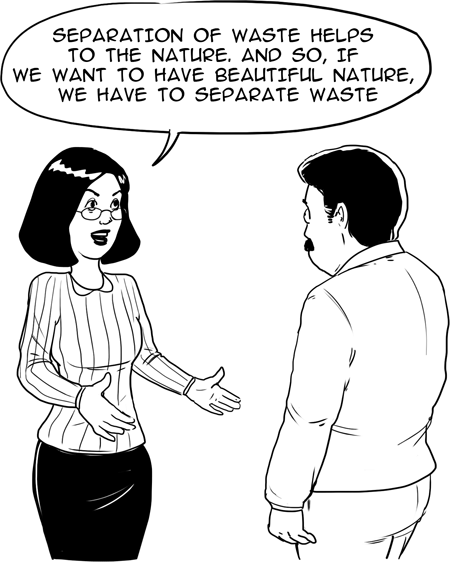Critical thinking
This topic shows you how to think critically, find hidden contexts and read between the lines
Circular reasoning
Circular reasoning tries to suggest that the conclusion of an argument itself is its reasoning, or it tries to verify the conclusion by its reformulating and repetition.
Structure is like this: Argument A is true because it is true.
This kind of argumentation is very often used in various religions and sects. You can choose one of them, first one is longer, but better
Examples:

“Separation of waste helps to the nature. And so, if we want to have beautiful nature, we have to separate waste.”
Explanation: The aim is to support the statement that separation of waste helps to the nature. However, second sentence is not saying anything new, it just reformulates the first part without any reasoning. This statement can be right, but it is still manipulative, because it is not really reasoned. Not to speak about using subjective category of beauty – beauty has nothing to do with the quality of nature – often we like more state of nature which is not really natural and vice versa.

„Custom duties for less developed countries are needed, people from outside of EU should pay for the opportunity to sell their products in the EU.”
Explanation: This argument would like to support the statement about the need of custom barriers for less developed countries. But similarly like in previous example it does not explain why it is important, it only reformulates the first part and pretends that it give the explanation.
